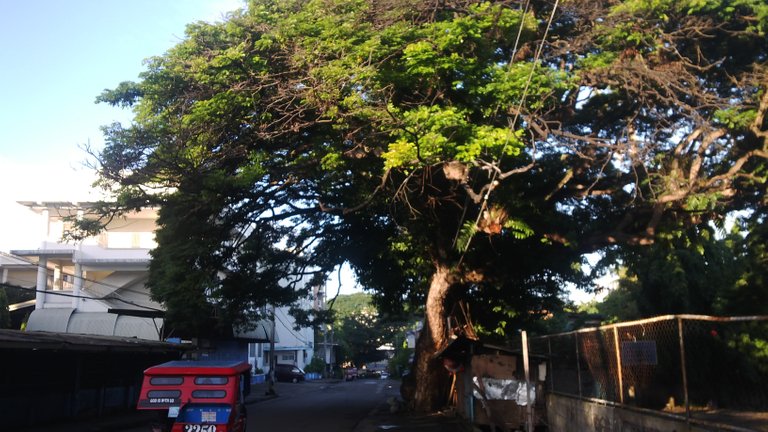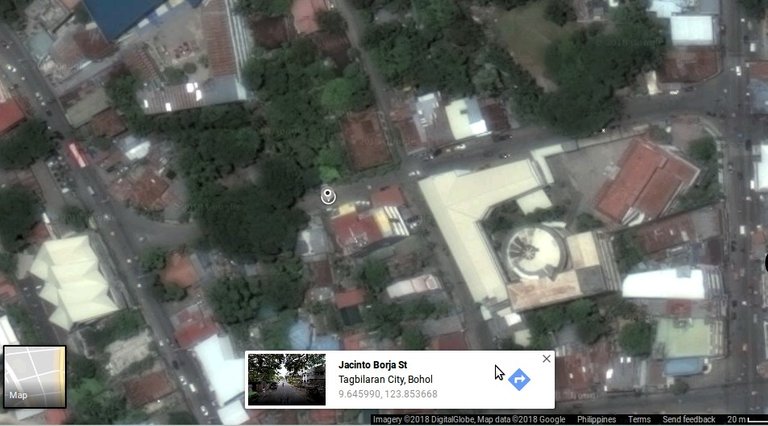Every time I visit my folks in Bohol, there's a street that I frequent, not for its glitz and glamor but for its character. That street is Borja Street, in Tagbilaran City, Bohol.


It's the one with the grayed-out pin.
It's a short side street connecting Celestino Gallares Street, along which our house stands, and Carlos P. Garcia Avenue, Tagbilaran's high street.
The street is named after Dr. Jacinto C. Borja, a former governor of Bohol. The man has an amazing story. While still a 15-year-old high school junior in Silliman Institute, he was already the captain of the college's debating team. He went on to study at the University of the Philippines where he became editor-in-chief of the Philippine Collegian (freakin' Kule, that Maoist student tabloid by the time I was in UP). He distinguished himself as an orator and was awarded the Palma medal in debating and the Quezon medal in oratory.
At the Manila Grand Opera House in 1927, the UP debating team composed of Jacinto Borja, team coach Carlos P. Romulo, Pedro M. Camus, Deogracias Puyat, and Teodoro T. Evangelista debated with a team from the University of Oregon. The two teams faced off before a packed audience of close to 10,000, and the event was broadcast by radio throughout Asia. The police were present too, as emotions were surely to run high because of the subject of the debate: that the Philippines was ready for independence and self-government. It was a night of cat calls, boos, hisses, thunderous applause, and even flying fists among the audience. Onstage, however, the UP team easily won by a staggering audience vote.
Stoked by their victory, the young men toured the United States, engaging in college debates on the same subject, winning most of them. They were supposed to go on a 15-university debating tour. But when they reached Miami University, their 9th venue, they were told that the debate had been canceled and they were allowed to make speeches only. So great was the coverage of their debates and so strong was their influence that university officials began to worry that the authority of the US Secretary of War - and therefore the president - was being challenged.

Team members of the University of the Philippines debate team, with Professor Carlos P. Romulo (center). From left: Pedro Camus, Teodoro Evangelista, Deogracias Puyat, and Jacinto C. Borja. The photo was taken in San Francisco, California, April 18, 1928, and the caption reads: “Four students of the University of the Philippines, under the leadership of Prof. Carlos P. Romulo of the College Faculty, recently arrived in the United States on a tour of the world to debate the question of Filipino independence. The round-the-world debate on the Philippine question is academic and has nothing to do with politics.”
So the young men went home shortly thereafter. On July 1929, when their ship docked at the port of Manila, thousands of students from UP and from other schools flocked to the harbor and cheered, welcoming them as heroes. Then they went on their separate ways.
On 1930, Borja began to practice as a lawyer. After independence had finally been achieved, from January 1948 to December 1951 he served as governor of Bohol. Much later, from 1962 to 1964, President Diosdado Macapagal appointed him as Ambassador and Permanent Representative of the Philippines to the United Nations. From 1965 to 1966, he served briefly as the Philippine ambassador to Japan.

Through all this, Jacinto Borja and Carlos Romulo's friendship apparently endured. The marriage announcement of Dr. Maria‐Lourdes Chanco, published in The New York Times on February 4, 1964, states that "[s]he is a niece of Dr. Jacinto C. Borja, chief delegate to the United Nations from the Philippines, and the grandniece of Carlos P. Romulo, former chief delegate to the United Nations from the Philippines and former Ambassador to the United States," thus implying that Borja was related to Romulo by affinity.
Whew. It's amazing how elusive a person's biography can be. I don't even know how and when Mr. Borja died. I'm going to have to ask my relatives about it. Not that they would know.
References:
UP Debating Team photo:
http://pinoythaiyo.com/2015/11/23/asias-top-debaters-brilliant-breed-of-filipino-speakers/
http://www.positivelyfilipino.com/magazine/2013/7/when-lolos-debating-team-vanquished-america
Ambassador to Japan photo:
http://tokyo.philembassy.net/the-embassy/the-ambassador/former-ambassadors/
Various UN memos